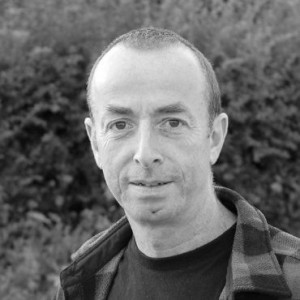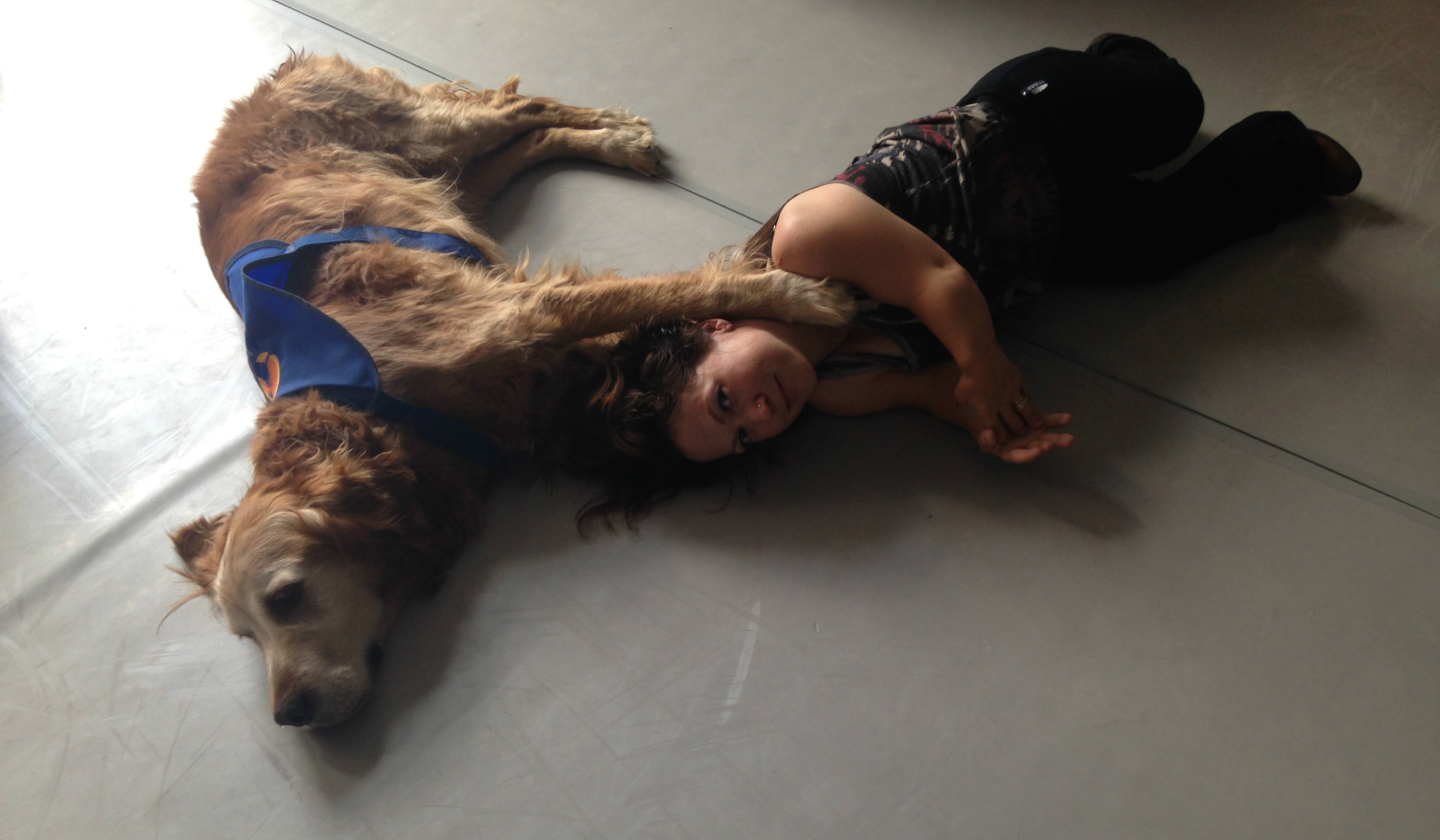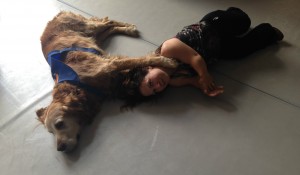BY ADAM BENJAMIN
In 2014, I was in Berlin to lead an improvisation workshop, as part of an initiative to make a place for integrated dance (dance for disabled and non-disabled dancers) within the summer festival of the Tanzfabrik School.
Amongst the dancers to arrive on the first morning was lawyer and dancer, Silke Schöenfleisch, accompanied by her helper dog, Jack. Between snoozes, Jack watched our activities with mild curiosity, occasionally meandering amongst the moving bodies before flopping down in his favored spot by the piano.
I became increasingly fascinated by his unencumbered reliance on sensing and the immediacy of his responses, writing in my diary:
It is in relation to Jack’s responses that I measure my steps, my tone, my playfulness, my resting; not all the time, sometimes I am oblivious to him, but his presence in the space is part of my sensorial world, a part I find myself taking more and more notice of. His senses out reach mine, his ears prick to sounds beyond my range, his nose tastes the air, his body gives way to resting with ease, while mine, full of a teacher’s thoughts, resists the floor; Jack, an uncanny, canine referee, seems able to sniff out a lie at forty paces.
On the second day we played with a temporal-spatial score that I’d developed called Crossing the Line. This involves dancers entering the performance space, improvising for an agreed period, and then seeking their most opportune/satisfying/meaningful moment to leave, departing the space across the same line by which they enter. Jack watched the proceedings.
Toward the end of one improvisation a dancer becomes stranded alone in the space, temporarily unable to find the moment to leave. As we all watch, attending to her choices, gauging our need to offer assistance against her need to explore this moment of uncertainty, Jack emerges from behind the piano, wanders across to where she stands, gently takes her by the wrist and tenderly (her wrist in his mouth) guides her across the (imaginary) line and to join the rest of the group.
Silke Schöenfleisch and Jack (photo by Adam Benjamin)
It is such a remarkable moment that no one can think of anything very much to say. Silke seemed fairly un-phased by it and explained that Jack saw what needed doing and was just trying to help; “He is a helper dog, Adam, a retriever, that’s his job”. And Jack just looked at me, with his doleful eyes as if to say, “That wasn’t too difficult, was it … Adam?”
I know what you’re thinking. You’re thinking: “Adam is having an imaginary conversation with a dog in Berlin” … and this just is a little worrying.
I just want to say one thing here. Jack is an English Golden Retriever.
It is part and parcel of my workshop methodology to encourage participants to be aware of everything that is in the space and be cognizant of how the space, and all that is in it, offers itself to the improvisation. Here is Gearóid McCann, one of the workshop participants, describing our early work together in the studio:
For the first two days the ground work of the practice; an attention to breath and to the senses was gently introduced and bedded in. This awareness of what is seen, heard, felt, sensed, touched connects us not only to each other but to physical space we move within, our breath connects us to the air that breezes in from the open windows, to the sounds of the city, police sirens sounding, birds singing, a dog barking somewhere down on the street below, our practice brings us into ‘being’ rather than ‘acting’ or the dance equivalent: ‘throwing shapes’.
Gearóid’s reference to the “ground work” brings to mind the work of social anthropologist Tim Ingold who talks of the ground comprising “a domain in which the lives and minds of its human and non-human inhabitants are comprehensively knotted with one another”.
For many years the cognitive sciences laboured under the misapprehension that studying isolated individuals in laboratory conditions, through psychological and neurological testing, could give definitive answers about human behaviour and the nature of consciousness. It is an approach that has been referred to as the “experimental quarantine” approach (Richardson et al. 2012), one that aligns itself to a medical model of the human psyche and neurologically centered explanations of consciousness.
The unexpected contribution of Jack (clearly no respecter of ‘quarantines’) raises myriad questions about social interaction and in particular about joint action, that field of enquiry that explores events where “two or more individuals coordinate their actions in space and time to bring about a change in the environment” (Sebanz et al. 2006).
Whatever “motive” we might apply to Jack’s action, his intervention in our score was a beautiful and unexpected example of “x”, a moment when something “other”, something outside of our field or frame of enquiry, actively intervened in our research. It was a reminder that we are connected to the world and interact with it in multiple ways, some of which transcend individuated action or language. It was also a reminder that the purpose of research is to open us to possibilities that we might not have previously considered and to raise questions that we might not previously have imagined.
 About the author:
About the author:
Adam Benjamin teaches theatre & performance at Plymouth University. He co-founded CandoCo Dance Company, the first professional company for disabled and non-disabled dancers, and is the author of the ground-breaking book, Making an Entrance: Theory and Practice for Disabled and Non-disabled Dancers. In 2015, Adam was named a ‘Change Maker’ by the Southbank Centre, London.


